Struggling with endometriosis? Discover the ultimate guide to managing symptoms, exploring options, and taking control of your well-being today!
Navigating Treatment Options for Endometriosis: A Comprehensive Guide
Introduction
Endometriosis, a condition where tissue similar to the uterine lining grows outside the uterus, can significantly affect a woman’s quality of life. It is often characterized by chronic pelvic pain, heavy menstrual bleeding, and infertility, affecting millions of women worldwide. While the exact cause remains unknown, effective treatment options can help manage symptoms and improve well-being. When considering endometriosis treatment, women often have to decide between surgical and non-surgical approaches. This blog provides a detailed exploration of these options to help you make an informed choice about managing endometriosis.
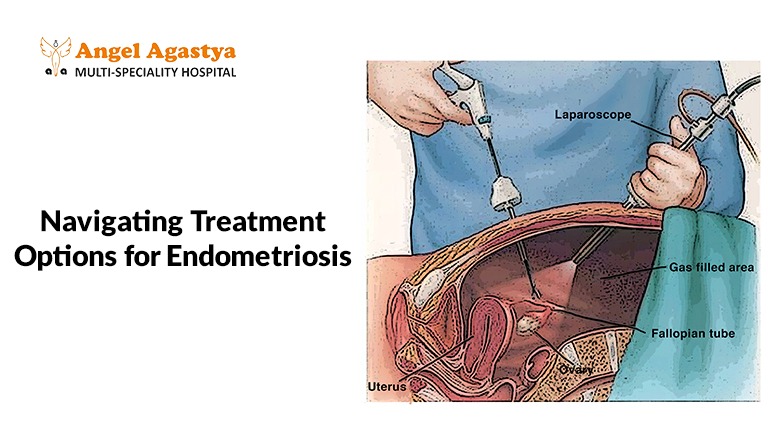
Understanding Endometriosis
Before diving into various endometriosis treatment options, it’s essential to understand the condition itself. Endometriosis occurs when tissue resembling the uterine lining grows outside the uterus, often on the ovaries, fallopian tubes, or other pelvic organs, leading to pain, inflammation, and even infertility.
Common Symptoms of Endometriosis:
- Chronic pelvic pain
- Pain during menstruation or intercourse
- Heavy or irregular menstrual bleeding
- Fatigue and digestive issues
- Infertility in severe cases
How is Endometriosis Diagnosed?
Diagnosing endometriosis often requires a combination of medical history, imaging tests (such as ultrasound or MRI), and sometimes laparoscopy, a minimally invasive surgical procedure to confirm the condition. Early detection is critical to managing symptoms effectively and preventing complications.
Why Treatment Matters:
Without appropriate endometriosis treatment, the condition can worsen over time, impacting overall health and well-being.
Non-Surgical Treatment Options
Non-surgical approaches are often the first line of defense in endometriosis treatment, offering relief without invasive procedures. Non-surgical treatments focus on managing symptoms, slowing disease progression, and preserving fertility. These options often involve medications and lifestyle adjustments
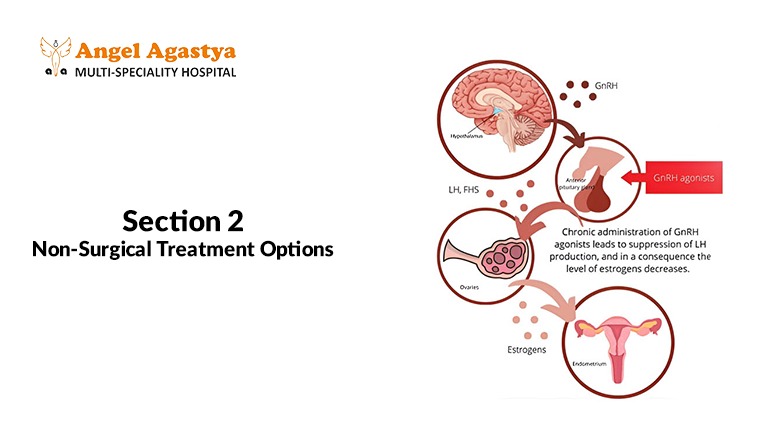
Hormonal Therapies
- Hormonal Birth Control: Pills, patches, or IUDs can regulate hormones, providing effective endometriosis treatment for pain and heavy bleeding.
- Progestin-Only Therapies: These treatments suppress the growth of endometrial tissue, aiding in symptom management. It includes pills, patches, or hormonal IUDs.
- GnRH Agonists: These medications lower estrogen levels temporarily, making them a powerful option for endometriosis treatment.
Pain Management
- NSAIDs and Prescription Medications: Both over-the-counter and prescription drugs play a key role in pain-focused endometriosis treatment.
- Complementary Therapies: Yoga, acupuncture, and mindfulness are emerging as supportive tools in comprehensive endometriosis treatment plans.
Surgical Treatment Options
When non-surgical treatments fail to provide relief, surgical endometriosis treatment can offer more definitive solutions.
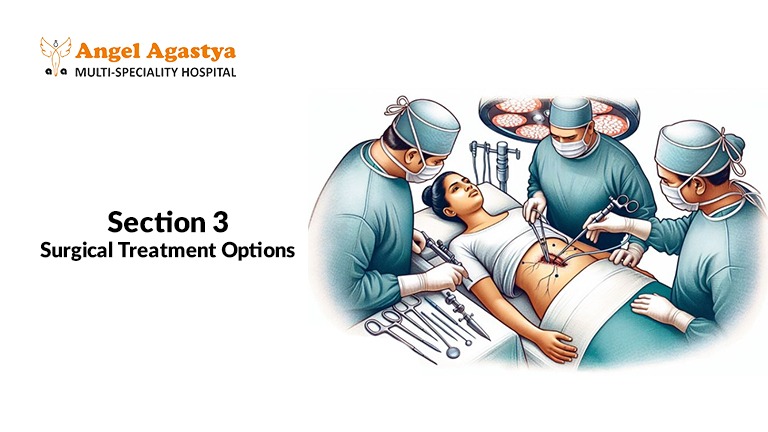
Laparoscopy
Laparoscopy is a gold standard in endometriosis treatment for women seeking fertility preservation. This minimally invasive surgery removes endometrial tissue and adhesions, providing significant relief. During this minimally invasive procedure, small incisions are made in the abdomen to insert a camera and surgical instruments.
Hysterectomy
Hysterectomy procedure involves removing the uterus and sometimes the ovaries. In severe cases, a hysterectomy may be the best endometriosis treatment for women who no longer wish to bear children. This procedure involves removing the uterus and sometimes the ovaries.
Choosing the Right Treatment
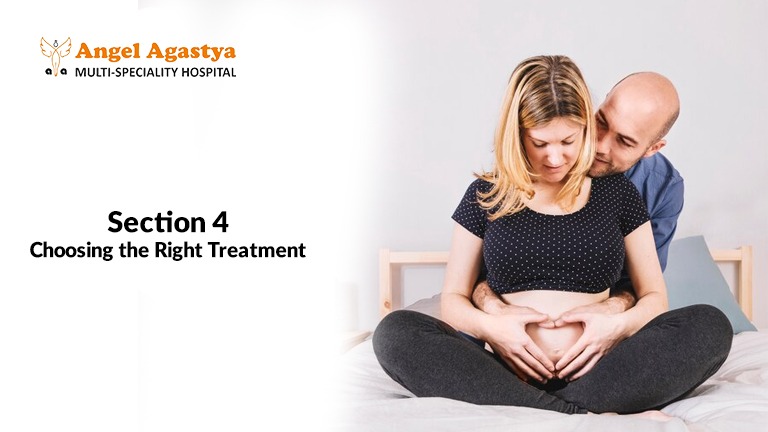
The choice between surgical and non-surgical endometriosis treatment depends on several factors, including:
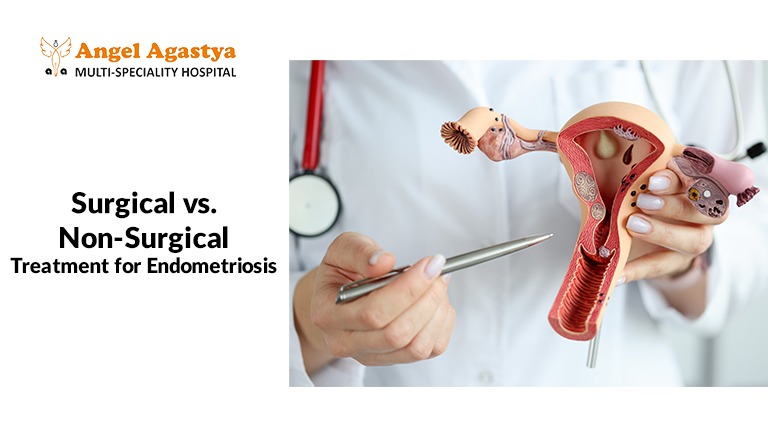
- Symptom Severity: Women with mild symptoms may benefit from non-surgical options, while severe cases often require surgical intervention.
- Future Fertility Goals: Non-surgical endometriosis treatment is usually recommended for women planning to conceive.
- Age and Health: Older women or those with additional health conditions may lean towards definitive treatments like hysterectomy.
- Impact on Quality of Life: Chronic pain and emotional stress may influence treatment decisions.
Recovery and Follow-Up Care
Regardless of the chosen endometriosis treatment, recovery and follow-up care are critical for long-term success.
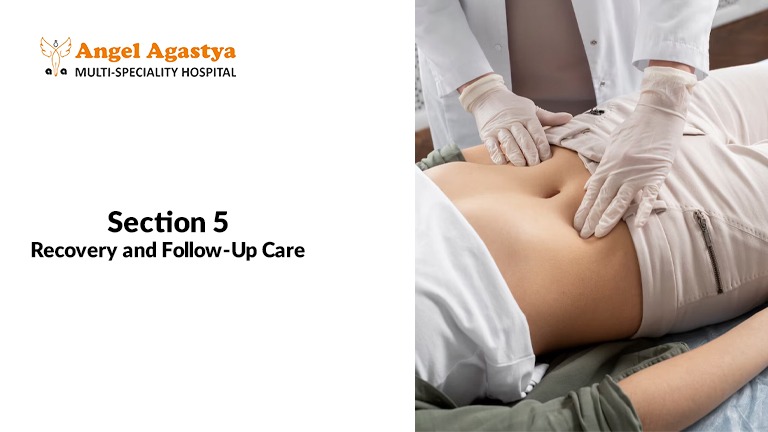
Post-Surgery Recovery:
Regardless of the chosen endometriosis treatment, recovery and follow-up care are critical for long-term success.
Post-Surgery Recovery:
- Rest: Avoid strenuous activities for at least 2-6 weeks, depending on the procedure.
- Pain Management: Take prescribed medications as directed to alleviate discomfort.
- Monitor for Complications: Watch for signs of infection or adverse reactions.
Long-Term Follow-Up:
- Regular Checkups: Schedule routine visits with your healthcare provider to monitor progress.
- Hormonal Therapy Adjustments: Post-surgery, some women may require hormonal treatments to manage residual symptoms.
- Lifestyle Changes: Adopting a healthy lifestyle can help prevent recurrence and improve overall well-being.
Holistic and Lifestyle Approaches

Lifestyle changes and holistic strategies can complement medical treatments, providing relief and enhancing quality of life.
- Dietary Adjustments:
- Anti-inflammatory diets rich in omega-3 fatty acids, vegetables, and whole grains can reduce symptoms.
- Avoid processed foods and excess caffeine, which may exacerbate inflammation.
- Exercise:
- Low-impact activities like yoga or Pilates improve flexibility, reduce pain, and alleviate stress.
- Stress Management:
- Techniques such as mindfulness, meditation, and counseling can address the emotional toll of living with endometriosis.
Prevention and Proactive Measures
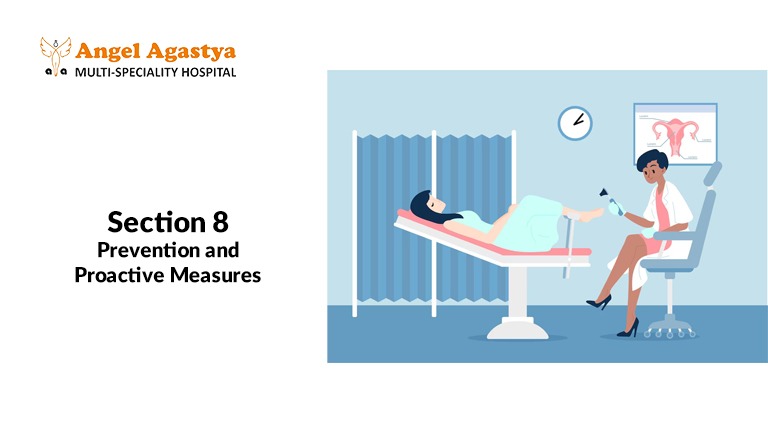
While it’s not always possible to prevent endometriosis, proactive steps can minimize risks and improve outcomes.
- Early Diagnosis:
- Seeking medical attention for symptoms can prevent complications.
- Regular Checkups:
- Routine pelvic exams and imaging tests ensure timely intervention.
- Informed Choices:
- Discuss risks and benefits of endometriosis treatments, especially hormonal therapies, with your healthcare provider.
Conclusion
Choosing the right endometriosis treatment is a deeply personal decision that requires understanding your symptoms, goals, and medical advice Whether you choose hormonal therapy, laparoscopy, or lifestyle changes, the right treatment can significantly improve your quality of life. Work closely with your healthcare provider to develop a personalized plan tailored to your needs. Remember, you are not alone—resources, support groups, and advanced treatments are available to help you reclaim control over your health and happiness
FAQs About Endometriosis Treatment
Here are 10 FAQs based on the blog “Navigating Treatment Options for Endometriosis”:
- What is endometriosis, and how does it affect women?
Endometriosis is a condition where tissue similar to the uterine lining grows outside the uterus, causing symptoms like pelvic pain, heavy periods, and infertility. - How is endometriosis diagnosed?
Endometriosis is diagnosed through a combination of medical history, imaging tests (ultrasound or MRI), and laparoscopy, a surgical procedure used to confirm the condition. - What are the common symptoms of endometriosis?
Common symptoms include chronic pelvic pain, painful menstrual cycles, heavy or irregular bleeding, fatigue, and, in some cases, infertility. - What non-surgical treatment options are available for endometriosis?
Non-surgical options include hormonal therapies (birth control pills, progestin, GnRH agonists), pain management (NSAIDs), and lifestyle modifications like anti-inflammatory diets and exercise. - When should surgery be considered for endometriosis?
Surgery is typically considered when non-surgical treatments fail to alleviate symptoms or in severe cases. Laparoscopy is used for fertility preservation, while a hysterectomy may be recommended for women no longer wishing to bear children. - What is laparoscopy, and how does it help in treating endometriosis?
Laparoscopy is a minimally invasive surgery that allows doctors to remove endometrial tissue and adhesions. It is particularly beneficial for women seeking fertility preservation. - What is a hysterectomy, and when is it necessary for endometriosis treatment?
A hysterectomy involves removing the uterus and sometimes the ovaries. It is generally recommended for severe cases where other treatments have not provided relief, especially for women who no longer wish to have children. - How can lifestyle changes support endometriosis treatment?
Adopting an anti-inflammatory diet, engaging in low-impact exercise, and managing stress through techniques like yoga and mindfulness can complement medical treatments and improve quality of life. - How long does it take to recover from endometriosis surgery?
Recovery times vary, but most women need to rest for 2-6 weeks after surgery. Pain management and monitoring for complications are essential during recovery. - What emotional and psychological support is available for women with endometriosis?
Support groups, professional counseling, and self-care practices like hobbies and relaxation techniques can help manage the emotional toll of living with endometriosis.

